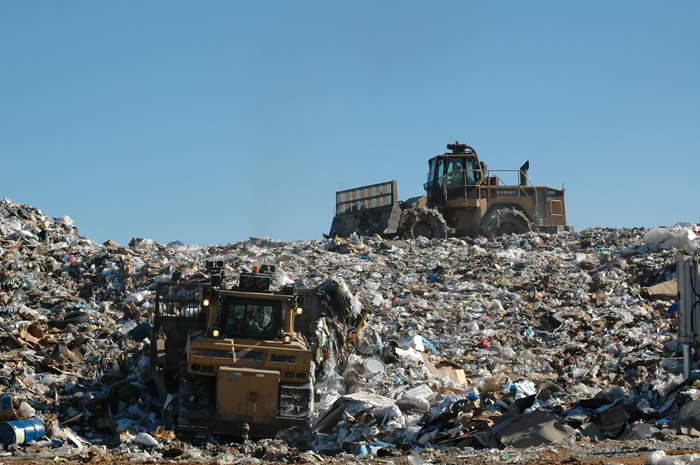environmental SCIENTIST | Feeding the nine billion | February 2017
Around a third of all food produced for human consumption is lost or wasted from the farm to the fork. This huge level of inefficiency has economic, social, and environmental impacts. Food loss and waste causes about $940 billion per year in economic losses, it exacerbates food insecurity and malnutrition, and food that is ultimately lost or wasted consumes about a quarter of all water used by agriculture, requires cropland area the size of China and is responsible for an estimated 8 per cent of global greenhouse gas emissions1. The emissions from food production alone, if left unchecked to 2050, would be enough to increase global temperatures by 2 oC2. Therefore, it is important for future generations to find solutions now, particularly to help feed nine billion people in 2050 without undue environmental implications for water, land and fishery resources.
What is food loss and waste?
The Food and Agriculture Organization of the UN (FAO) defines food loss as any decrease in mass or nutritional value of food that was originally intended for human consumption, normally caused by deficiencies in the supply chain or the impact of natural factors. Food ‘waste’ is a sub-set of loss and refers to food appropriate for human consumption being deliberately discarded3. The FAO definition includes only edible items thereby excluding skins, stones and rinds. FUSIONS, the 2014-16 European project aimed at reducing food waste, include “associated inedible parts of food” to the definition of food loss and waste, to enable a wider approach to tackling the problem to be adopted4. Given that what is regarded as edible food varies around the world (for example chicken feet are eaten in China, but are not widely eaten in the UK), the latter definition has some advantages and helps provides details on the full scale of the issue. The international Food Waste and Loss Standard provides an approach to measuring all food waste, both edible and inedible parts, although it does not define food waste specifically5.
Understanding the scale of the problem
The old adage “If you can’t measure it, you can’t manage it” applies especially to food waste. Globally there is very limited data on food loss and waste, partly due to a historic lack of interest and more recently due to the very real difficulties in measuring it. The World Resources Institute (WRI) recognised this in its paper outlining the problem, commenting, “If one does not know how much or where food loss and waste is occurring, how can one be expected to do something about it? Experts interviewed for this working paper agreed that across the food value chain, better measurement and monitoring of food loss and waste is needed”6.
Take the UK as an example. Because most food discarded by households is part of general mixed waste, prior to 2008 no one had much idea how much food households were wasting. There was a view that most of it was likely to be unavoidable (peelings, cores and skins) and so not much could be done to prevent it. Waste and Resources Action Programme’s (WRAP) study, The Food We Waste7, clearly showed not only was the scale of waste large, but the vast majority of the food discarded was edible. WRAP updated the figures in 20128 and more recently in 20179. The latest estimates are that 7.3 million tonnes (Mt) was produced of which 4.4 Mt was avoidable (60 per cent), which was worth a staggering £13 billion.
Although waste in food manufacturing and retail is significant, it is not at the same scale as household food waste. In the UK, for example, 2.0 Mt arises from retail and manufacturing and a further 0.92 Mt from the hospitality sector; less than half of the amount produced by households10. Data on food loss and waste in primary production is much harder to obtain, with no reliable UK estimate available. WRAP is currently working with Trade Associations, food producers and retailers to improve this situation.
The need to quantify food waste has recently gained profile around the world, with the UN Environmental Programme (UNEP) and the FAO partnering to produce guidance11, and the World Resources Institute (WRI) leading a global effort to produce a quantification and reporting standard5. The European project, FUSIONS, has provided an estimate of 88 Mt for the 28 Member States of the EU, while noting that this estimate is based on data from relatively few countries12. They also supplied a manual on measuring food waste which is consistent with the Food Waste and Loss protocol12.

Figure 1. Studies by WRAP have shown that 60 per cent of food waste generated in the UK was avoidable. (© Photoneer | Dreamstime)
Tackling the issue
There have been pockets of activity around the world to prevent food waste, with activities ramping up recently in the light of UN Sustainable Development Goal (SDG) 12.3 on tackling food waste. Some of these are outlined in WRI’s working paper6 and covers initiatives right across the supply chain.
Often businesses and other organisations can tackle food waste themselves through adaptations to processes or practices. UNEP provides a general step-by-step guide in their 2014 publication11, with more detailed guidance widely available for localities, such as the Greater London Authority13, and for sectors14.
Other initiatives are consumer-facing. In the UK, the Love Food Hate Waste campaign aims to raise awareness of the need to reduce food waste and help everyone to take action, showing that by doing some easy practical everyday things in the home, everyone can all waste less food, and this together with other initiatives in the UK, has helped people reduce food waste by around 1 Mt per year9. Love Food Hate Waste also operates in parts of Canada, Australia and New Zealand15. Sainsburys, one the UK’s major grocery retailers, runs Waste Less Save More which aims to change the way we think about food - what we buy, how we cook, how we eat - and what we throw away16. In Denmark, Stop Wasting Food (Stop Splid Af Mad), is a non-governmental organisation aiming to shape public opinion in a drive to prevent food waste, urging and empowering consumers to take action17.
Other initiatives attempt to work across the whole supply chain, recognising the need to intervene at all stages to effectively tackle the issue. In the UK, Courtauld Commitment 2 galvanized the food manufacturing and retail industry in efforts to reduce food waste, resulting in 240,000 tonnes of household food waste being avoided between 2009 and 201218. The series of Courtauld commitments are voluntary agreements funded by the UK government and industry that set out to improve resource efficiency, reduce carbon and water emissions, and reduce waste within the UK grocery sector. The latest – Courtauld 2025 – involves a wide range of players from industry to academia in tackling the issues19.
The FUSIONS project piloted and evaluated seven social innovations aimed at reducing food waste, including school-based projects and the use of social events. The evaluation concluded that “Whilst social innovation in itself cannot completely solve the issues of food waste and food poverty, the seven FUSIONS feasibility studies, along with evidence from numerous other socially innovative projects, suggests that it can be extremely effective and should be considered as one of a suite of policy tools deployed to tackle the issues”20.
Building on FUSIONS, REFRESH is an EU research project that also involves China, which aims to contribute towards SDG 12.321. It will develop strategic agreements to reduce food waste with governments, business and local stakeholders in four pilot countries (Spain, Germany, Hungary and the Netherlands), formulate EU policy recommendations and support national implementation of food waste policy frameworks, and design and develop technological innovations to improve valorisation of food waste22.
Food redistribution also has a role to play in preventing food waste, with recent figures suggesting that at least 270,000 tonnes of surplus food from the UK food and drink industry could be redistributed to feed people each year23. In the UK, WRAP leads a Food Redistribution Industry Working Group, as part of Courtauld 2025, which has developed four simple principles to help increase food redistribution without impacting on food safety or brand integrity24. One of the UK’s major players, FareShare, redistributed more than 10,000 tonnes in 2016 and there appears to be a real focus on increasing this substantially over the next few years, exemplified by a recent goal announced by WRAP and Courtauld Commitment signatories to double surplus food redistribution in the UK by 2020 against a 2015 baseline25.
Surplus food that cannot be redistributed to humans can, where it is safe to do so, be fed to animals. Millions of tonnes of surplus food is used in this way across Europe, reducing the need for animal feed from other sources. Recent research shows that there is scope to divert more surplus to this source23, bringing with it environmental benefits.
To help drive progress towards achieving UN SDG 12.3, Champions 12.3 was set up. It is a coalition of leaders from around the world dedicated to inspiring ambition, mobilizing action, and accelerating progress toward achieving SDG Target 12.326. The Champions’ recent report concludes that much more needs to be done and calls for governments and companies to:
- set ambitious targets to motivate action;
- quantify and report on food loss and waste, and
- monitor progress over time through 2030; and accelerate and scale up adoption of policies, incentives investment and practices that reduce food loss and waste.
Food waste recycling and valorisation
Where food waste cannot be prevented, then current best practice is for it to be collected separately and recycled either through anaerobic digestion (AD) (which generates biogas that can be used to produce renewable energy) or composting. This practice has grown rapidly in the UK27 and in many other European countries and there is huge scope to do much more of this. The UK food manufacturing industry for example sends 0.5 Mt to recycling and virtually no food waste to landfill28. The outputs from the recycling of separately collected food waste through AD and composting, can be used safely as a fertiliser to help grow more food. Recent research has shown the agricultural benefits from both of these forms of recycling supply29. There is huge scope to grow this practice right around the world, reducing resource use, greenhouse gas emissions and, where used properly, improving soils.
Not only is there scope to grow the practise of recycling food waste, there is also considerable scope to make better use of underutilised resources in food waste and create new products and value using biological and chemical biorefining techniques. So called advanced ‘valorisation’ of waste could have real potential to deliver innovative products with lower environmental impact. For example, according to recent research on waste from the food industry, they could be used as feedstocks to produce materials for bioplastics, cleaning agents, cell culture media and even anti-oxidants30. There is certainly scope to do much more of this, bringing economic, social and environmental benefits.

Figure 2. An anaerobic digestion (AD) facility, which can recycle food waste to biogas whcih can be used to produce renewable energy. (© loraks | Fotolia)
What next?
In recognition of the seriousness of the issue, ever more ambitious targets are being set on reducing food waste. In September 2015, countries adopted a set of goals to end poverty, protect the planet, and ensure prosperity as part of a new UN sustainable development agenda21. Each goal has specific targets to be achieved over the next 15 years including goal 12.3 which, as noted above, calls on all nations to halve food waste and reduce food loss by 2030. Although it is not binding, it sets a very clear level of ambition and countries will be expected to report progress. The European Union and its member states support the initiative and it is has been adopted in the current draft of the EU Circular Economy package31.
Individual countries have also set their own goal independent of the UN SDG, with Scotland pledging to cut food waste by a third by 202532 and the USA setting a goal of 50 per cent reduction by 203033. Industry bodies have also set targets, for example the Consumer Goods Forum’s Food Waste Resolution aims to halve the amount of food wasted within the operations of its retailer and manufacturer members by 2025, through prevention and increased recycling34.
Ultimately it will be important to know more about what works and to replicate it globally. Voluntary agreements are likely to be part of that picture, and consumers need to play an important role in changing habits and practises. Work in many countries has shown that food waste can be reduced, but even in those that have done a lot of work on this issue like France, Netherlands, Sweden and the UK, no country has got close to UN SDG 12.3 yet. There is time (although only 13 years to hit the SDG goal 12.3) and a need for commitment, measurement and action across supply chains and in the home21. There are encouraging signs that we know a lot about how we can deliver the reductions required, but given the progress on reducing food waste in homes has stagnated in the UK in recent years9, we need to find even more innovative ways of engaging people and helping them change. There is also scope to make much better use of the surplus food and food waste that does arise. These are the challenges and opportunities we face and it will be important to act, and act now. Food is a hugely valuable resource and we need to make much better use of it to help feed the nine billion people that are likely to be living on the planet in 2050.
Dr Barbara Leach is Head of Research and Evaluation at WRAP, providing support and guidance on research design and interpretation. She has a PhD in waste management policy and is a fellow of the Chartered Institution of Wastes Management (CIWM). (Barbara.Leach@wrap.org.uk)
Dr Richard Swannell is Development Director at WRAP, leading on developing and delivering WRAP’s international and new product development strategies. Richard joined WRAP in 2004 and became a Director in 2006. His first degree was in Biochemistry and he has a Doctorate in Environmental Engineering.
This article is taken from the February 2017 edition of the environmental SCIENTIST.
References
1. FAO (2011) Global Food Losses and Waste - Extent, Causes and Prevention.
2. Bajželj, B., Richards, K.S., Allwood, J.M., Smith, P., Dennis, J.S., Curmi, E. and Gilligan, C.A. (2014) Importance of food-demand management for climate mitigation. Nature Climate Change, 4, pp. 924–929.
3. FAO (2017) Technical Platform on the Measurement and Reduction of Food Loss and Waste: Food Waste.
4. FUSIONS (2014) FUSIONS Definitional Framework for Food Waste.
5. World Resources Institute (WRI) (2016) Food Loss and Waste Accounting and Reporting Standard.
6. WRI (2013) Reducing Food Loss and Waste: Working Paper.
7. Waste and Resources Action Programme (WRAP) (2008) The Food We Waste.
8. WRAP (2012) Household Food and Drink Waste in the UK 2012.
9. WRAP (2017) Household Food Waste in the UK 2015.
10. WRAP (2016) Estimates of Food Surplus and Waste Arisings in the UK.
11. United Nations Environment Programme (UNEP) (2014) Prevention and Reduction of Food and Drink Waste in Businesses and Households. V.1.0.
12. FUSIONS (2016) Establishing reliable data on food waste and harmonising quantification methods.
13. Greater London Authority (2015) Helping businesses reduce food waste
14. WRAP Surplus Food Redistribution.
15. Love Food Hate Waste (LFHW) Victoria, Aus; LFHW NZ; LFHW California
16. Sainsbury's - Waste Less, Save More.
17. Stop Wasting Food Movement Denmark (Stop Spild Af Mad).
18. WRAP (2013) The Courtauld Commitment Phase 2: Final Results.
19. WRAP - How to reduce waste and save your hospitality and food service business money
20. Bromley, S., Rogers, D. and Bajzelj B. (2016) WP4 Evaluation report. FUSIONS.
21. Sustainable Development Goals, United Nations
22. REFRESH: Resource Efficient Food and Drink for the Entire Supply Chain.
23. WRAP - Quantification of food surplus, waste and related materials in the supply chain.
24. WRAP - Surplus Food Redistribution Working Group.
25. WRAP - Surplus food redistribution: WRAP's work.
26. Champions 12.3. (2016) SDG Target 12.3 on Food Loss and Waste: 2016 Progress Report.
27. ADBA. (2016) Anaerobic Digestion Market Report.
28. WRAP - Handy facts and figures on food surplus and waste in the UK.
29. WRAP - Digestate and compost in agriculture (DC-Agri).
30. WRAP - Food Futures: from business as usual to business unusual.
31. European Commission - Circular Economy Strategy.
32. Scottish Government - Make Things Last and Save.
33. US Environmental Protection Agency - EPA and USDA Join Private Sector, Charitable Organizations to Set Nations First Goals to Reduce Wasted Food.
34. Food Waste Resolution, Consumer Goods Forum.





